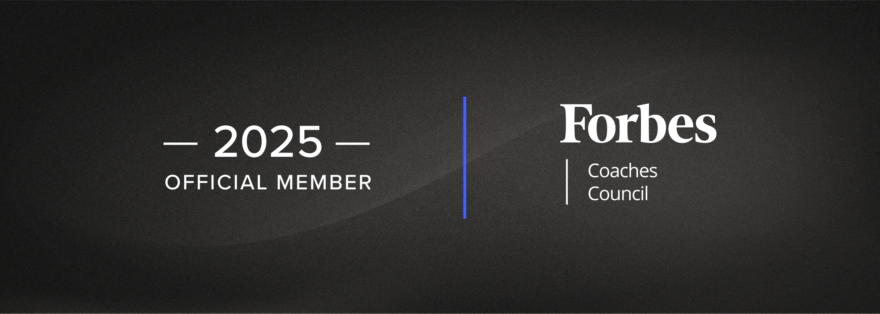Leadership remains a critical focus for organisations, with over $60 billion spent annually on leadership development worldwide. Despite extensive training, many leaders struggle to define their role clearly. In this first article of a three-part series, the author explores the concept of purpose as a foundational element of effective leadership, breaking it down into three key areas: higher purpose, perceptions, and scope.
- Higher Purpose: Leaders must articulate a compelling and clear purpose that resonates across all levels of the organisation. A well-defined purpose guides decision-making and aligns teams, ensuring everyone is motivated and committed to achieving common goals.
- Perceptions: Leaders play a crucial role as the organisation’s PR representatives, shaping both internal and external perceptions. By effectively communicating the purpose and linking each team member’s role to the broader mission, leaders foster a sense of ownership and alignment.
- Scope: Striking a balance between ambition and resources is paramount. Leaders must identify the ‘Goldilocks zone’—setting challenges that are demanding yet attainable. This necessitates making strategic decisions about what to pursue and what to relinquish, ensuring that teams are not stretched too thin and that resources are utilised efficiently.
The article also equips leaders with practical questions to evaluate and refine their approach to purpose, perceptions, and scope. These insights are designed to empower leaders in driving their organisations forward while maintaining clarity of direction and focus. The next article in the series will delve into the second critical category: people.

Leadership is an ever-evolving concept that remains a subject of profound interest and exploration for professionals worldwide. Global organisations spend more than $60 billion every year on leadership development, honing the skills of seasoned and aspiring leaders.
Despite all this learning, a simple question baffles even the most seasoned leaders: “What exactly do leaders do?” You will find widespread discussion on leadership styles and theories, but there’s a distinct lack of focus on what leaders actually do.
I co-founded my company in 2016, a behavioural change business helping corporate teams “get out of their own way.” This talented team has multi-sector corporate world leadership experience gained in finance, utilities, hospitality, health care and telecoms, to name a few.
Over the years, we have encountered many frustrated leaders in our interactions, observations and countless coaching sessions in over 150 companies. From this emerged nine key areas related to what leaders should be doing. All nine, while expected, are surprisingly hard to find all in one place.
These nine areas fall under three core categories: purpose, people, and productivity. In a three-part miniseries, I will unpack each category and uncover the nine critical areas. I will share insights and examples and provide a comprehensive checklist guiding leaders toward effective and impactful leadership practices. In this first article, let’s start with the purpose category and look at its three key areas.

Purpose: Clarifying Direction And Focus
The purpose category boils down to three core elements: higher purpose, perceptions, and scope. Successful leaders understand the significance of shaping and articulating a higher purpose, managing perceptions inside and outside the organisation, and balancing their resources to achieve a demanding agenda.
Higher Purpose
I am working with the senior team of a top motorway services operator in the U.K., a highly successful organisation embarking on its next growth phase. They recognised that their 6,500-strong team needed to step up to do this. I challenged them to articulate their purpose as if I were a new starter on the front line of their business.
It was challenging; while they could intellectualise it, they couldn’t simplify it. The purpose should be compelling and translatable across the organisation to engage and keep teams motivated even when times get tough. The simpler it is, the easier it will be to socialise, share and inspire people to step up and pursue ambitious goals.
This overarching purpose defines future aspirations, informs decision-making, and forms the basis for any proposed changes to the plan. Any changes to strategies and tactics should be tested against the purpose. Does this align with our purpose? Accelerates our plan? And at what cost?
Perceptions
Leaders are the organisation’s PR representatives, building a team of individuals dedicated to achieving a common goal. They help others understand how their work fits the bigger picture, motivating and garnering acceptance to reduce barriers to success.
In my example above with the motorway service operator, the simplified strategy became three core areas that made sense to stakeholders at all levels. Leaders can lift it off the page and talk passionately with every team member. It enables team members to connect their contribution to the higher purpose.
In an effort to help cultivate consistent internal and external perceptions like these, my company runs its leadership program alongside senior team workshops, providing tools and mental models and extending permission to apply them to meaningful sponsored business projects.
Scope
Ambition is essential for companies to drive forward, stretching their teams to perform. However, leaders must balance their resources, which is particularly tricky for leaders who continually demand more.
Leaders should look for the Goldilocks zone. If the challenge is not great enough, your people get bored and coast along—until the pace increases, then find it hard to step up. Too much on the agenda, and you will burn out your people or risk achieving nothing; at best, you will have delays or cut corners to meet demanding timelines, quality expectations, and budgets.
It is much better to focus on what you care about; challenging, yes, but achievable. Business strategist Michael Porter says that strategy is choosing what not to do. Leaders often forget that resources are finite, be that skills, people or budget.
I am coaching a project manager of a large U.S.-based med-tech company based in Europe. They report to the U.S.-based project management office (PMO). My coachee’s frustration is “too many projects with too few resources available.” Add to this senior colleagues refusing to talk truth to power. They are not calling out resource shortages or pressure on timelines for fear of repercussions at a more senior level—the impact is overcommitting others to unachievable expectations and setting them up to fail.
Questions to Ask
Leaders must be careful what they ask for and foster a psychologically safe space where people can and will share reality.
These questions can help leaders define, check and balance their higher purpose and perceptions and manage a demanding yet achievable agenda.
Higher Purpose
- What are the compelling reasons why we do what we do?
- Why this and not something else?
- Why is this better than doing nothing?
- If all else fails, what would we revert to?
- What are we not prepared to compromise?
Perceptions
- How do we judge how others see the purpose?
- How do we communicate our view of the purpose?
- How do we promote congruent attitudes and behaviour?
- What are we consistently doing to grow the team?
- How do we, as leaders, model for and serve our followers?
Scope
- What are the most relevant priorities for us?
- What’s in scope—and what’s not?
- Why this first? Why now and not later?
- What are the boundaries of our activity?
- What are we prepared to give up?
Look out for part two of this three-part miniseries on areas leaders must master for success. We’ll delve into the second category: people.
Great leaders understand that the success of any organisation lies in creating an environment where people can grow, succeed and contribute to a common purpose.
This article first appeared on Forbes.com on 11th August 2023
Ricky has been a regular contributor to the Forbes Councils since 2023, where he shares his perspectives on all things leadership, change, culture and productivity, all with Thinking Focus’ unique perspective on metacognition, or as we prefer to say, thinking about thinking.






